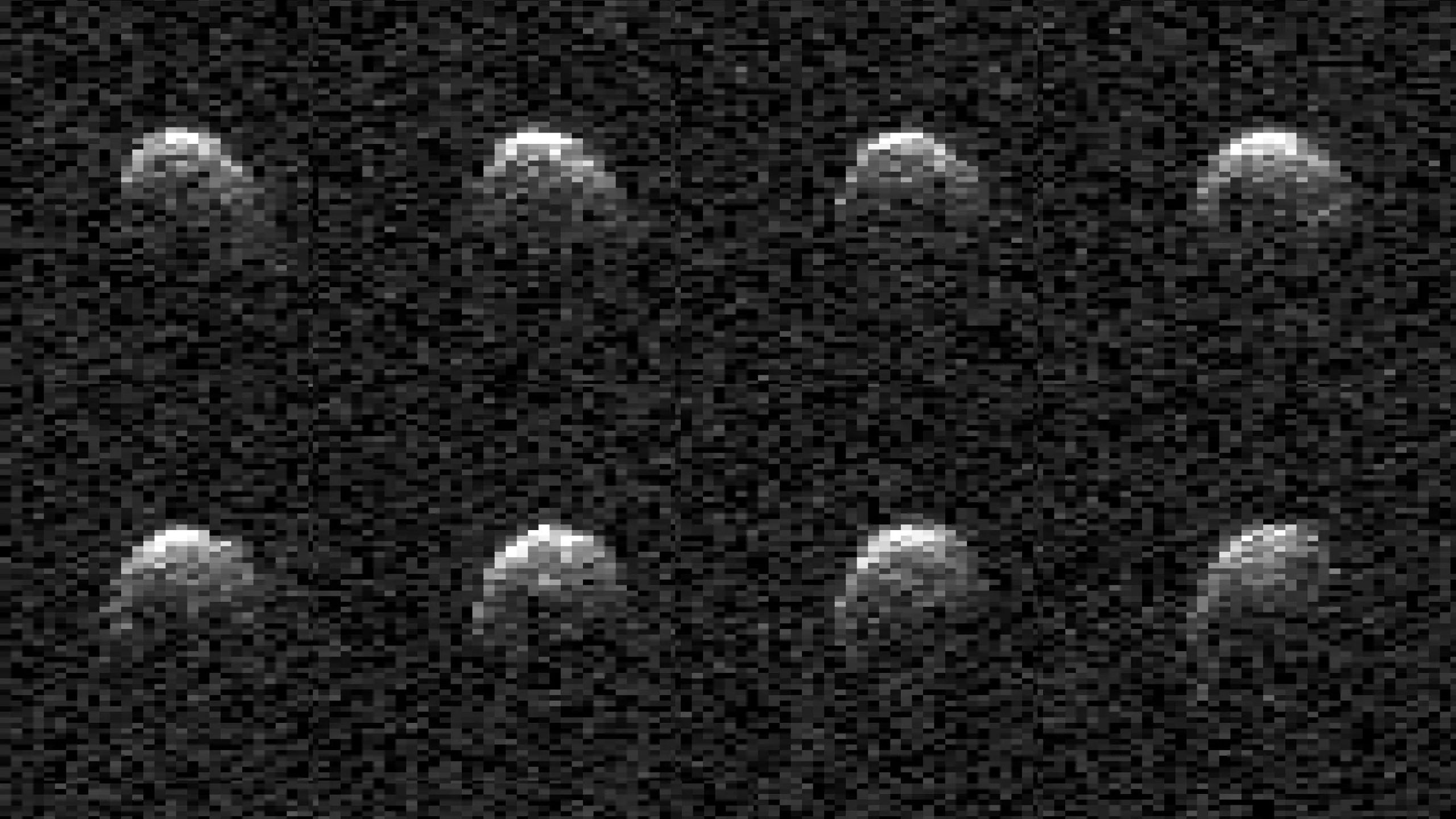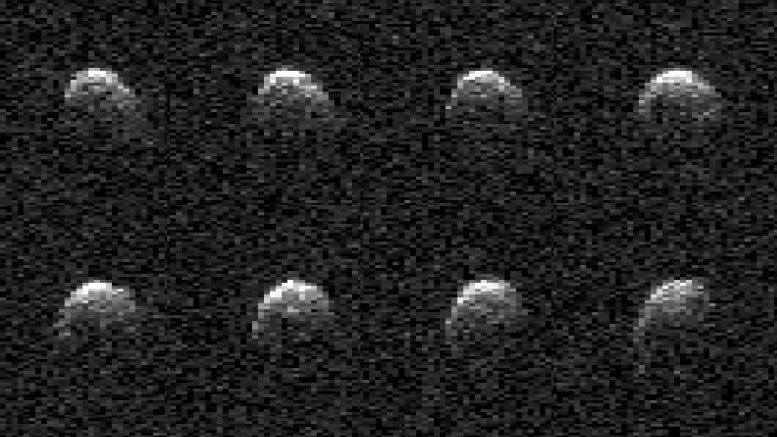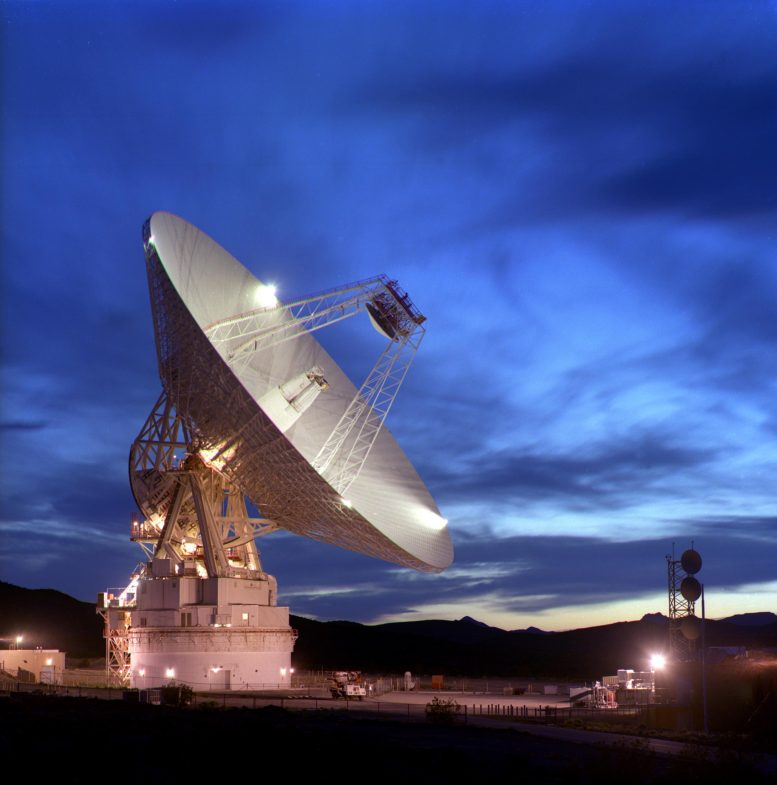

The day before asteroid 2008 OS7 approached Earth on February 2, this series of images was captured by the powerful 230-foot (70 m) Goldstone Solar System radar antenna near Barstow, California. Image source: NASA/JPL-Caltech
As 2008 OS7 approached Earth on February 2, the agency's Deep Space Network planetary radar collected the first detailed images of the stadium-sized asteroid.
On February 2, a large asteroid drifted safely near Earth at a distance of about 1.8 million miles (2.9 million kilometers, or 7 times the distance between Earth and the Moon). There was no danger from the asteroid – called 2008 OS7 – Impact on our planet, but scientists in NASAThe Jet Propulsion Laboratory in Southern California used a powerful radio antenna to better determine the size, rotation, shape and surface details of this near-Earth object (NEO). Until this close approach, asteroid 2008 OS7 was too far from Earth for planetary radar systems to image it.
Discovery and observations
The asteroid was discovered on July 30, 2008, during routine searches for near-Earth objects by the NASA-funded Catalina Sky Survey, headquartered at the University of Arizona in Tucson. After discovery, observations of the amount of light reflected from the asteroid's surface revealed that it was approximately 650 to 1,640 feet (200 to 500 meters) across, and that it rotated relatively slowly, completing one revolution every 29 and a half hours.
The rotation period of 2008 OS7 was determined by Petr Pravec, at the Astronomical Institute of the Czech Academy of Sciences in Ondrejov, Czech Republic, who observed the asteroid's light curve — or how the brightness of the object changes over time. As the asteroid rotates, variations in its shape change the brightness of the reflected light that astronomers see, and those changes are recorded to understand the asteroid's rotation period.

The Goldstone Solar System Radar (GSSR) is a large radar system used to examine objects in the solar system. Located in the desert near Barstow, California, it consists of a 500-kilowatt (8,500 MHz) transmitter and a low-noise receiver on a 70-meter DSS 14 antenna at the Goldstone Deep Space Communications Complex. Credit: NASA
Radar imaging reveals details
As February 2 approaches, Jet Propulsion LaboratoryNASA's radar group used the powerful 230-foot (70 m) Goldstone Solar System Radar Antenna dish at the Deep Space Network facility near Barstow, California, to image the asteroid. What scientists found is that its surface contains a mixture of rounder and more angular areas with small concavities. They also found that the asteroid is smaller than previously estimated — about 500 to 650 feet (150 to 200 meters) across — and confirmed its unusually slow rotation.
Potentially dangerous but safe for now
Goldstone's radar observations also provided basic measurements of the asteroid's distance from Earth as it passed. These measurements could help scientists at NASA's Near-Earth Object Studies Center (Sinus) Improving calculations of the asteroid's orbital path around the sun. Asteroid 2008 OS7 orbits the Sun once every 2.6 years, traveling from within the Sun's orbit. Venus And the past is orbiting Mars At its furthest point.
CNEOS, managed by JPL, calculates every known orbit of near-Earth objects to provide assessments of potential collision risks. Due to its close orbit and size, 2008 OS7 is classified as a potentially dangerous asteroid, but its approach on February 2 is the closest it will reach our planet in at least 200 years.
While NASA reports on near-Earth objects of all sizes, Congress has tasked the agency with detecting and tracking objects 460 feet (140 meters) or larger that could cause significant damage to Earth if they collide with our planet.
The Goldstone Solar System Radar Array and CNEOS are supported by NASA's Near-Earth Object Observing Program within… Planetary Defense Coordination Office At the agency's headquarters in Washington. The Deep Space Network receives programmatic oversight from Satellite communications and navigation (SCaN) Program Office within the Space Operations Mission Directorate, as well as at the agency's headquarters.

“Web maven. Infuriatingly humble beer geek. Bacon fanatic. Typical creator. Music expert.”





More Stories
Scientists confirm that monkeys do not have time to write Shakespeare: ScienceAlert
SpaceX launches 23 Starlink satellites from Florida (video and photos)
A new 3D map reveals strange, glowing filaments surrounding the supernova